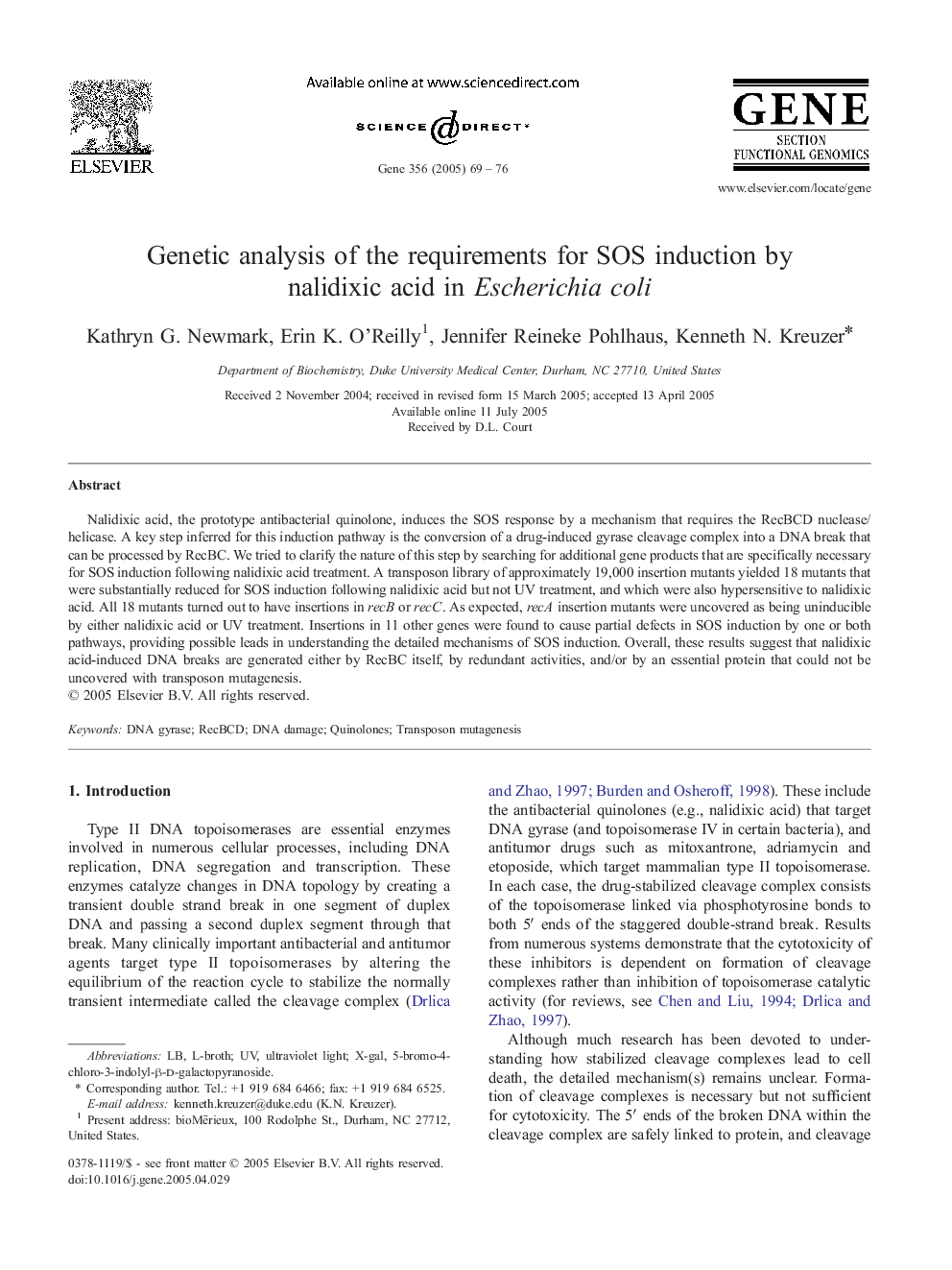| Article ID | Journal | Published Year | Pages | File Type |
|---|---|---|---|---|
| 9126947 | Gene | 2005 | 8 Pages |
Abstract
Nalidixic acid, the prototype antibacterial quinolone, induces the SOS response by a mechanism that requires the RecBCD nuclease/helicase. A key step inferred for this induction pathway is the conversion of a drug-induced gyrase cleavage complex into a DNA break that can be processed by RecBC. We tried to clarify the nature of this step by searching for additional gene products that are specifically necessary for SOS induction following nalidixic acid treatment. A transposon library of approximately 19,000 insertion mutants yielded 18 mutants that were substantially reduced for SOS induction following nalidixic acid but not UV treatment, and which were also hypersensitive to nalidixic acid. All 18 mutants turned out to have insertions in recB or recC. As expected, recA insertion mutants were uncovered as being uninducible by either nalidixic acid or UV treatment. Insertions in 11 other genes were found to cause partial defects in SOS induction by one or both pathways, providing possible leads in understanding the detailed mechanisms of SOS induction. Overall, these results suggest that nalidixic acid-induced DNA breaks are generated either by RecBC itself, by redundant activities, and/or by an essential protein that could not be uncovered with transposon mutagenesis.
Keywords
Related Topics
Life Sciences
Biochemistry, Genetics and Molecular Biology
Genetics
Authors
Kathryn G. Newmark, Erin K. O'Reilly, Jennifer Reineke Pohlhaus, Kenneth N. Kreuzer,
